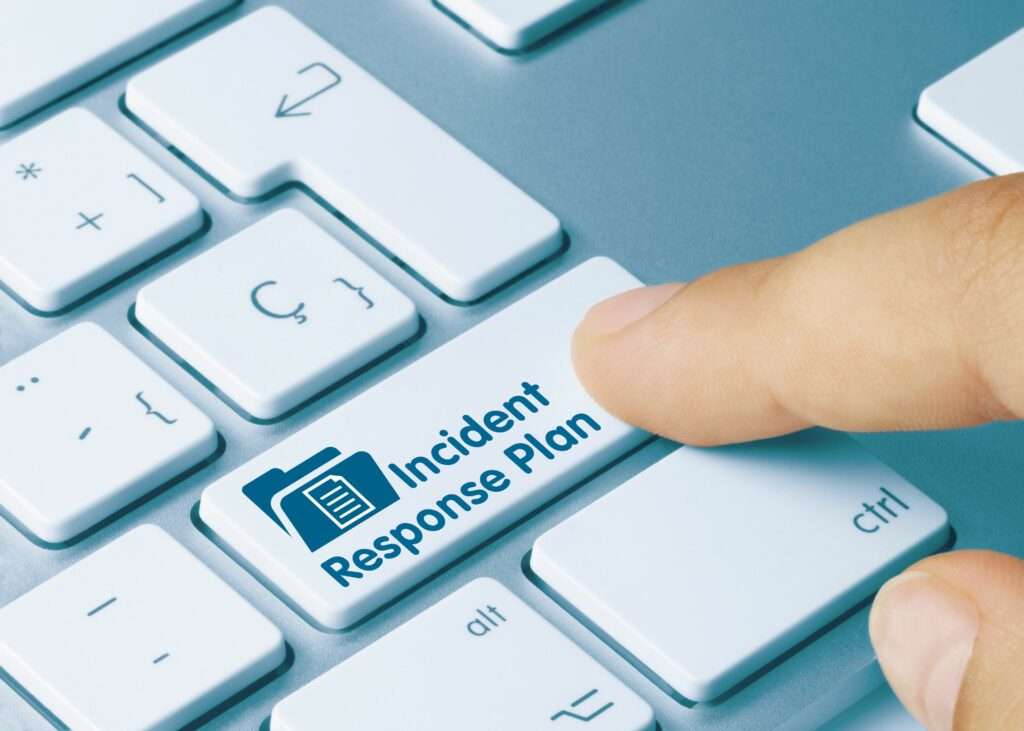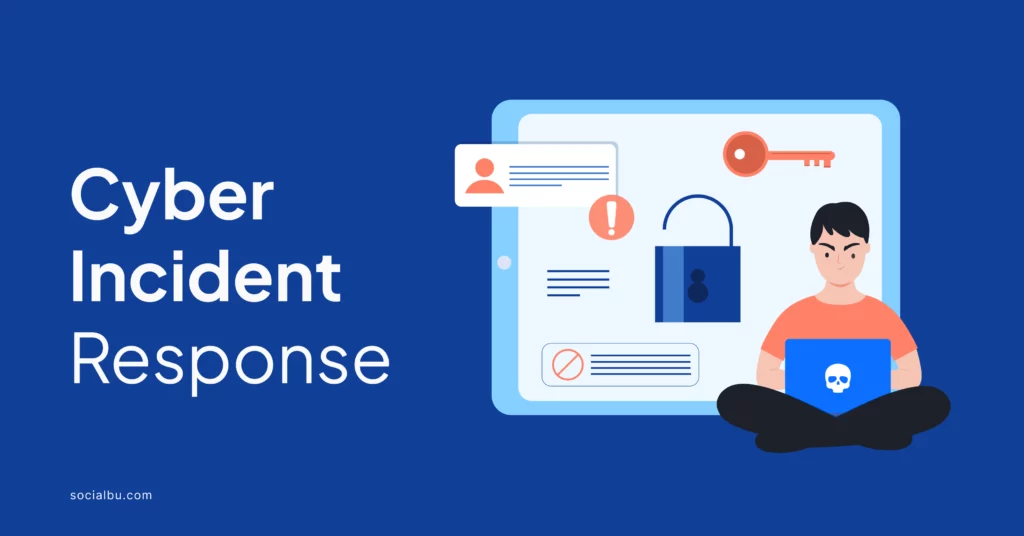In an age where digital presence can make or break your brand, understanding cyber incident response isn’t exclusively the concern of the information technology (IT) team. Managing threats and mitigating their consequences is a shared responsibility.
As a social media manager, you’re on the front lines of your organization’s digital interactions, making you crucial to protecting your brand’s online reputation and security.
If you’re unsure about cyber incident response and how it works, you’re on the right page. This blog discusses the basics of this crucial digital security component and provides insightful tips on acting swiftly and effectively before, during, and after a cyber incident.
Key Steps to a Cyber Incident Response
Cyber incident response is a structured approach to handling the aftermath of a security breach or cyberattack. It aims to minimize damage and reduce recovery time and costs. As such, it’s essential to an organization’s disaster recovery and business continuity plan.

A typical cyber incident response plan includes several key phases:
Preparation
This is all about being ready before an incident occurs. It involves creating policies, building an incident response team, and setting up the tools and processes you’ll need in case of an attack. Your chief information security officer is key in developing a formal incident response plan.
Working with a professional cybersecurity company is crucial in assessing risk and building or enhancing defenses.
Doing so also guarantees you’ll have a partner in planning and implementing an effective incident response. These experts bring specialized knowledge, advanced tools, and experience handling diverse threats.
To learn more about developing robust incident response plans, contact Gravity and similar firms for proactive and reactive cyber security support.
Identification
This process aims to detect and determine the extent of an unauthorized online intrusion. For you, this might mean spotting unusual activity on your social media accounts or noticing a spike in customer complaints about suspicious messages.
Containment
Your response team will take immediate action to stop the incident from spreading or causing more damage. In social media terms, this could mean temporarily locking down accounts or turning off certain features.
Stakeholder Communication
This is where your skills as a social media manager come in handy. You must inform relevant parties about the hacking incident, including the management and affected departments. Information should also be sent to customers, partners, or regulatory bodies when necessary.
Eradication
This task requires technical expertise, as it prioritizes removing the threat entirely from the affected systems. Incident response teams might work with other departments to eliminate malware or reset compromised accounts.
Recovery
Once threats are removed, your organization must restore its systems to normal operations. Social media managers can regain control of the accounts and resume regular posting schedules.
A reliable and secure data center service provider is crucial at this stage. These firms operate facilities that manage critical infrastructure and business data, allowing you to restore your operations quickly. If you’re looking for a partner, contact your nearest provider or reach out to Vaultas for valuable insights.
Lessons Learned
After the dust settles, it’s crucial to analyze what happened and how to prevent similar incidents in the future. Incident response tools, including digital forensics, can accurately identify the root cause of a cybersecurity incident.
Your incident management team might review and improve your response guidelines at this stage.
You might not be directly involved in all these stages as a social media manager. Still, understanding the process can help you play your part more effectively and communicate better with your IT and security teams.
Common Cyber Threats in Social Media

Let’s discuss some of the threats you might encounter in your role. This is especially helpful if you manage multiple accounts.
- Account Takeovers: This is when someone gains unauthorized access to one of your social media accounts. They might post malicious content, spam your followers, or try to scam them.
- Phishing Attacks: These are attempts to trick you or your followers into revealing sensitive information. They often take the form of fake login pages or deceptive messages.
- Data Breaches: While this might seem more like an IT issue, a breach that exposes customer data can quickly become a social media crisis as concerned users flood your channels with questions and complaints.
- Brand Impersonation: This involves cybercriminals creating fake accounts that look like your official brand accounts to mislead your followers.
- Malware Distribution: Attackers might try to use your social media platforms to spread malicious links or files to your followers.
A social media manager handles sensitive information, from login credentials to customer data. This puts you in a unique position as a potential cyberattack target and a key player in responding to them. Recognizing threats is the first step in responding to cyber incidents effectively.
Creating a Social Media-Specific Incident Response Plan
While your organization likely has a general cyber incident response program, creating a social media-specific version is worth it. Prioritize the following elements for an effective incident response plan:
- Account Recovery Procedures: Step-by-step guides for regaining control of hacked accounts on each platform you use.
- Communications Plan or Template: Pre-approved messages for different scenarios (e.g., “We’re aware of unusual activity on our account and are working to resolve it. Please disregard any suspicious posts in the meantime.”)
- Escalation Flowchart: Who to contact in different situations, from minor glitches to major data breaches.
- Monitoring Protocol: Guidelines for keeping an eye out for potential security issues across your social media presence.
- Training Schedule: Did you know that over 80% of cybersecurity incidents are caused by human error? Regular sessions are necessary to update your team on the latest threats and response techniques.
There’s no one-size-fits-all solution against cybersecurity incidents. The key is to tailor your plan to your specific needs. Your security incident response plan must also be reviewed and updated regularly as your operations change.
The Aftermath: Rebuilding Trust After an Incident
Even with the best preparations, incidents can still happen. When they do, your job doesn’t end when the technical issues are resolved. You’ll play a key role in rebuilding trust with your audience. Here’s how:
- Be Transparent: Once the situation is under control, share what happened without revealing sensitive details that could compromise security. Explain what you’re doing to prevent similar incidents in the future.
- Respond to Concerns: Take the time to address individual concerns from your followers. This personal touch can go a long way in maintaining relationships.
- Monitor Sentiment: Monitor closely how your audience reacts in the days and weeks following an incident. The insights you gather can guide your long-term response strategy.
- Learn and Improve: Use the incident as an opportunity to improve your social media security practices. Share these improvements with your audience to show you’re taking their security seriously.
How you respond after an incident can significantly impact your brand’s reputation and customer trust. Familiarizing yourself with cyber incident response protects your work, your audience, and the company you’re working for.
Wrapping Up
Understanding cyber incident response helps you become a valuable social media professional. By bridging the gap between social media management and cybersecurity, you’re positioning yourself as a key player in protecting your brand’s digital presence.
You don’t need to become a cybersecurity expert to become one. Start by familiarizing yourself with the basics, staying alert to potential threats, and fostering good communication with your IT and security teams. With time, you’ll develop the confidence to handle whatever digital curveballs come your way.







